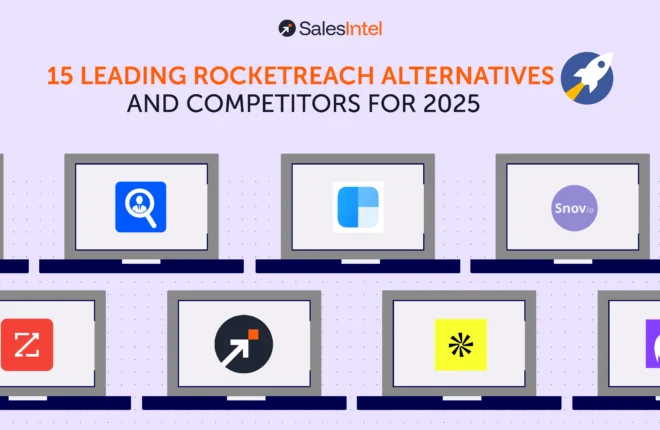The thinking caps are on! B2B sales professionals are finding ways to stay productive and minimize the impact of COVID-19 while working from home.
Introduction
The planet is reeling from the coronavirus outbreak. The consequences of the epidemic have been devastating to the global economy.
The Economic Cooperation and Development Organization has lowered the global economic growth projection for 2020 from 2.9% to 2.4%. Business revenue has already been cut and the impact has just begun to be felt.
How Is the Pandemic Currently Impacting B2B Sales Pipelines?
As ought to be, companies and their clients are focused on the health of their workers. Yet it can trigger some softness in the companies ‘ sales pipeline. Business analysts hope that the turnaround is going to be quicker and better than ever, but it will expose flaws with companies who are not prepared.
Many sectors have yet to disclose the impact of the current crisis. Many hope they can get through the current quarter and maintain guidance. Yet they continue to see a softness in their pipeline, deal slippage, postponed meetings, and decline site visits. Companies with a larger clientele will likely see less impact but make no mistake we all will feel it.
While face-to-face meetings are out of the realm of possibility, salespeople working from home are fortunately managing to transition their meetings to video conferencing. Thus, companies and clients working from home are helping to maintain productivity in spite of a rapidly changing environment.
Some businesses already had distributed workforces or established WFH policies and processes in place and were relatively well prepared for the current crisis. However, many others have been slow to adopt these trends and have been left flat-footed. Managers are confident about what one leader said about a large client:
On one hand, the likes of Amazon, Microsoft, and Facebook advise employees to work from home. On the other hand, the situation is different for some B2B organizations and in the B2C sector, which is experiencing immediate challenges, including a decline or stoppage in cash flow.
What Can Sales Leaders and Professionals Do to Survive This Disruption?
Go Virtual
Given the emergency, it is important to learn how to excel at the remote sale. Think about how to turn everything virtual.
For example, many businesses heavily rely on face-to-face meetings to close deals or move a project forward. Take that online, so someone who is sitting at home can have a similar experience. We should be developing those assets quickly. Turn all of it interactive, with video being the focus.
Focus on Existing Accounts
Companies need to concentrate on staying in touch with existing customers. Trust is the main factor that keeps existing customers engaged so they don’t switch to another vendor.
While it takes time to build trust in someone you don’t know, nurturing your hot leads and existing customers is the key to sales success during these times. Confidence is one of the main elements which causes companies to choose one company over another.
Prepare Before your Virtual Meetings
Sales reps working from home need to be efficient with their meeting time. Since you will be connecting with clients and prospects virtually, meetings often start late and continue for a long time unless you are well-prepared.
Prepare your calls as organized interviews, with careful research and the questions you have planned in advance. Use a conversation planner. Don’t wing it.
Manage Distractions
With everyone working from home distractions are a way of life. Whether it’s children running around, pets pestering and whining, TV’s on in the background, other browser tabs open, etc. distractions are everywhere when you’re working from home. To manage these first ensure you have removed as many distractions for yourself as possible. If you’re distracted then you better believe those on the other end of the call will be as well.
Make sure to always turn your camera on and ask prospects to do the same so that you can hold each other’s attention. Don’t just ask generic questions like “does that make sense” where it’s easy to pretend you’ve been listening. Ask probing questions that force them to pay attention. These will have the added benefit of helping you to better qualify your calls. To ensure engagement, tell them in advance that you will be asking questions and listening to most of the discussion.
Use the Right Set-Up
Take advantage of the new platforms and sales tools. Check the physical space before the call. Have you measured the picture on the screen that you are projecting? Do you have the correct streaming equipment for clear sound and video? How do you dress for the video calls? How do you use the sharing of screens or other tools?
Even if you’re already used to being independent, operating from home, and carrying on business over the phone or video, many of your prospects may not be. Keep this in mind.
How Do Businesses Cope With This Limited Way of Interacting?
Some sales managers are perceiving this challenge as a leap forward into a new operating rhythm. While some businesses are finding different ways of interacting with prospects and clients who are working from home, others expect a swift return to business as normal once the danger has passed.
It’s interesting to look at this problem, not from a “How do we cope with this limited way of interacting?” to “How can we maximize this new form of engagement?”
1. Reengineer Your Pitch or Solutions According to the Situation
Depending on the types of B2B solutions that you are offering, your prospects may already have major coronavirus pain points and concerns.
Rethink and change the way you pitch the main advantages of your products and services in a manner applicable to the current situation. Is there a sales pitch you can make on how you can solve their new acute issues stemming from the crisis? How does your B2B solution help your clients adapt to the coronavirus and help them get through the crisis?
For example, many companies are already announcing an aggressive shift toward remote working and encouraging people to work from home. Reaching prospects when they are not in the office is a huge problem when many numbers people have are for switchboards or unmanned desk phones.
However, as a reliable B2B data partner, we have a solution for our clients who are struggling to connect with the prospects during the global pandemic – direct mobile numbers for their prospects. Emphasizing mobile numbers for decision-makers in our B2B data added was the solution many of our clients needed for their sales team to stay productive and motivated in this crisis.
Major business conferences and trade shows are also being delayed or canceled and businesses have been forced to cancel travel plans.
At SalesIntel we’ve been impacted just like everyone else. You can see some of our recommendations for dealing with the impact of canceled events on your lead generation efforts here.
If you are offering a virtual event platform or collaboration tools, this might be a perfect opportunity to show your customers the importance of being able to have their most significant online business discussions, even though real-life meetings are not currently feasible.
Think of adding value to your service. The same selling points for your company that were already relevant before the coronavirus might still work, but you might need to slightly change your sales pitch to frame your solutions for the most urgent concerns of people.
Some of the most common pain areas of your prospects would be:
- Worried about possible coronavirus-related disruptions to their business
- Adapting to new travel restrictions
- Facing coronavirus-related shutdowns in their supply chain
- Figuring out how to collaborate with a remote team in new ways
- Improving their cloud protection or company insurance to deal with new emerging threats
Can you relate to these pain points, based on your clients and industry? If so, it’s time to fine-tune your sales approach based on these angles.
2. Maximize Your Digital Communication.
Some of Google, Twitter, and Apple’s big events have been postponed, but that doesn’t mean the companies are putting their operations on hold. Neither should you. Before your prospects start canceling appointments be sure to turn your face-to-face meetings into Skype or Zoom calls.
3. Get Creative with Sales Presentations
Coronavirus is causing most businesses to cancel travel and meetings in person. That means virtual presentations are more important than ever. Start repackaging your sales pitch into a virtual presentation. Be prepared to do more of your pitch online, rather than meetings on-site for the foreseeable future.
This may require a shift in your sales methods. You could be used to making an initial discovery-type phone call as one stage of your selling process, and then the next call will be a meeting on-site. However, on-site meetings are no longer an option for most of us.
Be prepared to be innovative, and keep sales going forward by doing stuff you never thought possible. Such as
- Take your customer on a virtual factory floor tour (using FaceTime or video conferencing apps)
- Make an in-depth product presentation that involves the technical staff who normally will not be involved in the sale until later.
- Send a YouTube video of your product or solution to your client in action, and then speak to them via web conference while watching the video together.
4. Work Smart to Retain Your Existing Customer Base
Out of sight means out of mind. You have to keep in touch or you risk losing customers. It is much easier and cheaper to keep and grow existing customers than to add net new ones. That adage is doubly true in times like these.
Here’s how you can do that:
4.1 Marketing Automation
Marketing automation is the cheapest, fastest, and most efficient way to stay in touch with your customers.
We’re not talking about sending automatic email marketing spam, nor are we thinking about sending out cold calling messages to attract new clients.
You need to send targeted, contextualized, personalized messages to existing customers who want to hear from you. You need to stay in contact with your customers through social media, by exploring the internet, at every touchpoint in their digital journey.
And doing so regularly and automatically will ensure the job is finished, which will free up the more expensive human resources to produce innovative campaigns that will bring more ROI.
4.2 Content
Content is an important element for your tactical marketing strategies, b2b lead generation, and for maintaining interaction with your current customers.
Share the latest developments that distinguish the product from your competitors, and share your uplifting brand stories in terms of awards and customer wins using the monthly newsletter.
Focus on value-added content at this time as traditional demand gen and aggressive sales tactics are falling flat at a time when we are all uncertain, scared, and reeling from these conditions.
Using social media means finding an opportunity to engage with your current customers as well as interact with new ones. LinkedIn, Twitter, Facebook, and YouTube – these are places where your customers review your product, discuss their buying decisions, and share reviews on your business. This becomes your asset.
Build a low-cost program at any point in the social media funnel to meet clients. Use these tools to listen to your clients, learn more about your business, and hear what they’re talking about.
And remember, it’s not about ads-use your comments to add meaningful and relevant content to existing conversations.
5. Don’t Stop Prospecting
Just like you need to stock up on supplies in case of quarantine, you need to “stock up” on sales prospects and you need to be doing it now instead of later. Devote extra time, energy, and money, right now, even if you’re currently busy, to sales prospecting and lead generation.
Even if you are not in an industry that has been directly affected by a coronavirus, there is a risk that this outbreak may lead to broader and more serious economic contagion. In having a larger pool of prospective customers to deal with in the long term, the company will be well-served.
Even if the coronavirus turns out to be a short-term scare, or if it’s worse than expected and the US economy falls into a deep recession, investing in a well-stocked pipeline of revenue opportunities is never a bad idea.
The worst thing you can do during the outbreak is go off the radar. Given the severity of the case, it’s unlikely that your prospects will remember you when this is over.
If that happens they’re not going to respond to your first post-outbreak outreach because they’re going to be concerned with other, more important issues.
Staying top-of-mind via online platforms and leveraging value-add content is vital because it helps with customer retention — and means you’ll have an audience to engage with once things get back to normal.
“Prospecting should never stop in B2B Sales.”
This is what we understand as a go-to B2B data partner in the industry.
With the highest number of decision-maker mobile numbers in the industry, we help to ensure the success of our clients by helping them to reach prospects when they are working from home.
SalesIntel has over 48 million mobile numbers to quickly connect with your decision-maker and use the time for more critical tasks than waiting for a switchboard operator or leaving a voicemail. All human-verified mobile numbers are re-verified every 90 days by our research team to ensure our data accuracy.
Final Thoughts
Keep calm. Nothing lasts forever. Even the COVID-19 pandemic.
Countries and economies have in the last decade undergone several shocks. Every time, businesses emerge better informed, more experienced, and with more sales and marketing strategies for the next crisis.
Wait for the first indication the crisis is over. We are sure that you will make up for any temporary losses very quickly.








